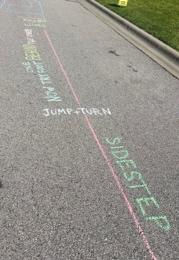Cerebral Palsy and Muscle Power
- All Care Therapies

- May 12, 2021
- 2 min read
The diagnosis of cerebral palsy (CP) encompasses “a group of neurological disorders that appear in infancy or early childhood and permanently affect body movement and muscle coordination.”1 According to the Centers for Disease Control and Prevention, the prevalence of cerebral palsy is 3.3 children per 1,000 live births, making it the most common physical disability in childhood.1
It is a common and long held belief that muscle weakness is one of the primary reasons children and adolescents with CP may be limited in their abilities to perform movements and participate in activities. While muscle weakness can be a contributing factor, other aspects of muscle performance have been commonly overlooked.
The way our muscles perform is not purely based on strength, but also on muscle power, how quickly they produce force, and endurance (or how long they can maintain their power). Strength is solely a measure of maximum force produced, whereas muscle power involves both strength and the speed of the movement. In summary, muscle power can be described ‘as the ability to generate the greatest amount of force as fast as possible.’2
In individuals with CP, muscle power and how quickly muscles produce force are often more impaired than strength and muscular endurance.2 When considering many of our day to day activities – walking, climbing stairs, standing up from a chair – they do not require every ounce of muscular strength you have, but rather they require your muscles to generate force quickly. As this is what daily tasks require from our muscles, we must train our muscles to do so!
Conventional resistance training exercises given to children with CP are commonly not demanding enough to produce the changes needed at the muscular level.2 It is essential that therapeutic interventions target all aspects of muscle performance (strength + power + speed) in order to produce changes in abilities to perform daily tasks.
With the latest research guiding treatment, physical and occupational therapists can design appropriate and creative interventions that will produce the changes that matter to patients with cerebral palsy and their families. The current literature supports the use of optimally dosed exercises requiring high power output in combination with strength training.3 This combination of interventions can successfully increase an individual’s ability to participate in daily activities as well as sports and games with their peers.
STRENGTH + POWER TRAINING = PATIENT EMPOWERMENT

References:
1. Cerebral Palsy: Hope Through Research. (2013). Retrieved November 06, 2020, from https://www.ninds.nih.gov/Disorders/Patient-Caregiver-Education/Hope-Through-Research/Cerebral-Palsy-Hope-Through-Research
2. Moreau, N. G., & Gannotti, M. E. (2015). Addressing muscle performance impairments in cerebral palsy: Implications for upper extremity resistance training. Journal of Hand Therapy, 28(2), 91–100. https://doi-org.libproxy.txstate.edu/10.1016/j.jht.2014.08.003
3. Kaya Kara, O., Livanelioglu, A., Yardımcı, B. N., & Soylu, A. R. (2019). The Effects of Functional Progressive Strength and Power Training in Children With Unilateral Cerebral Palsy. Pediatric Physical Therapy, 31(3), 286–295. https://doi-org.libproxy.txstate.edu/10.1097/PEP.0000000000000628




Comments